 |
 |
 |
| |
LONGITUDINAL MODELING OF EARLY HIV BURDEN IN THE CENTRAL NERVOUS SYSTEM
|
| |
| |
CROI 2022 Feb 16t
Victor D. Armengol1, Veronika Shabanova1, Lars Hagberg2, Richard Price3, Magnus Gisslen2, Serena S. Spudich1
1Yale University, New Haven, CT, United States, 2Gothenburg University, Gothenburg, Sweden, 3University of California San Francisco, San Francisco, CA, United States
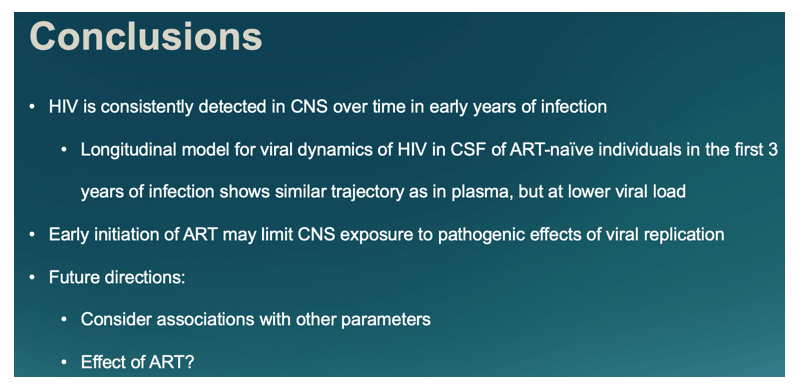
Program abstract
Background:
The dynamics of plasma HIV replication during early infection including establishment of a viral set-point are well-known. However, the course of HIV in the central nervous system (CNS) after initial entry of HIV into this compartment is less understood. Using longitudinal samples, we modeled the natural history of HIV RNA in the cerebrospinal fluid (CSF) and plasma during early HIV prior to initiation of antiretroviral treatment (ART).
Methods:
Participants with primary HIV infection (PHI, within 12 months of initial infection) were enrolled in prospective studies with paired longitudinal sampling of blood and CSF conducted in San Francisco, USA, and Gothenburg, Sweden prior to test-and-treat guidelines. This analysis incorporated all samples available over the first 3 years of infection from visits where participants were ART-naïve. HIV RNA assays had a lower limit of quantification of 40 copies/mL. Mean trajectory of CSF HIV RNA levels relative to time from infection was characterized using a restricted cubic spline function of time accounting for the correlated data within subjects. Parametric linear mixed effects models (LME) were also estimated to account for the covariate CD4/CD8 ratio and to confirm results from the spline analysis.
Results:
The final analytical cohort included 110 PHI participants (95% male, median age = 37, days post infection = 91 at enrollment) with 228 CSF and 247 plasma measurements. The model shows an initial decrease in CSF HIV RNA over the first 100 days of estimated infection, after which CSF HIV RNA begins to increase at a slow rate (see Figure). Similar trends were seen in the plasma model, but at higher absolute values of HIV RNA copies/mL and with a narrower confidence interval compared to CSF. Plasma-CSF viral load difference declined rapidly in the first 100 days of infection. We confirmed the mean trajectory of change in HIV RNA derived from the cubic splines approach using the parametric LME model. Blood CD4/CD8 ratio negatively correlated with CSF HIV RNA, as there was a 0.69 unit decrease in log10 CSF HIV RNA for each unit increase in the CD4/CD8 ratio (p = 0.0005).
Conclusion:
The viral dynamics in the CSF of ART-naïve individuals over the first 36 months of infection support the early spread of HIV to the CNS, and indicate that HIV replication is maintained in this compartment throughout the course of early infection prior to ART. Early initiation of ART may limit nervous system exposure to pathogenic effects of viral replication.
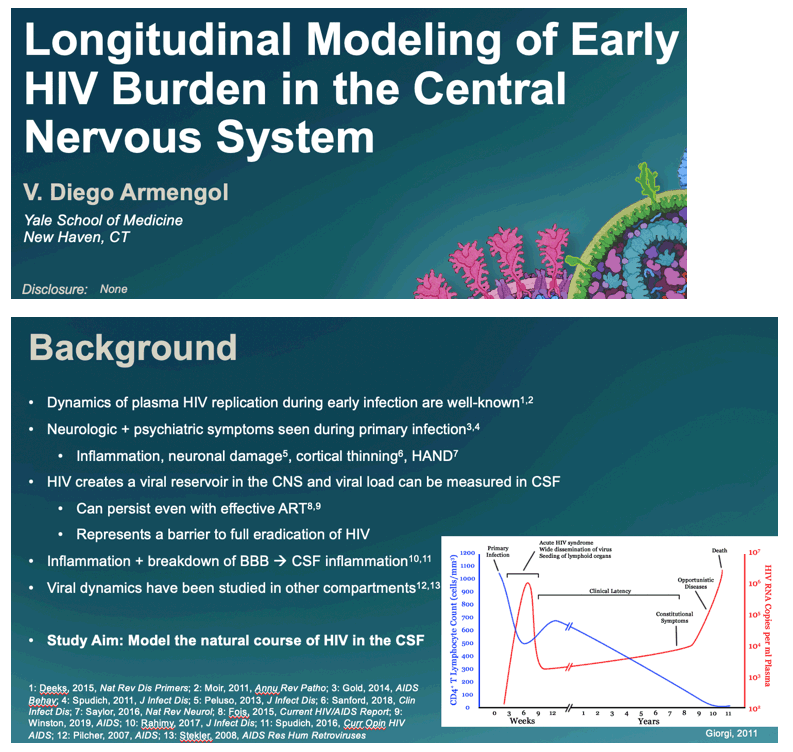
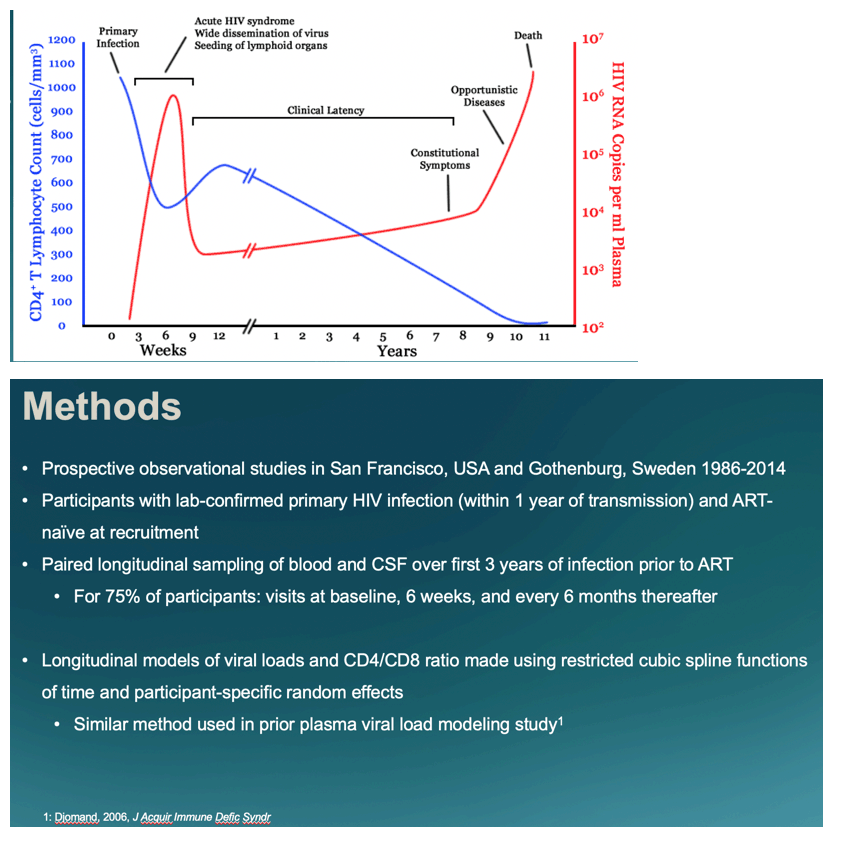

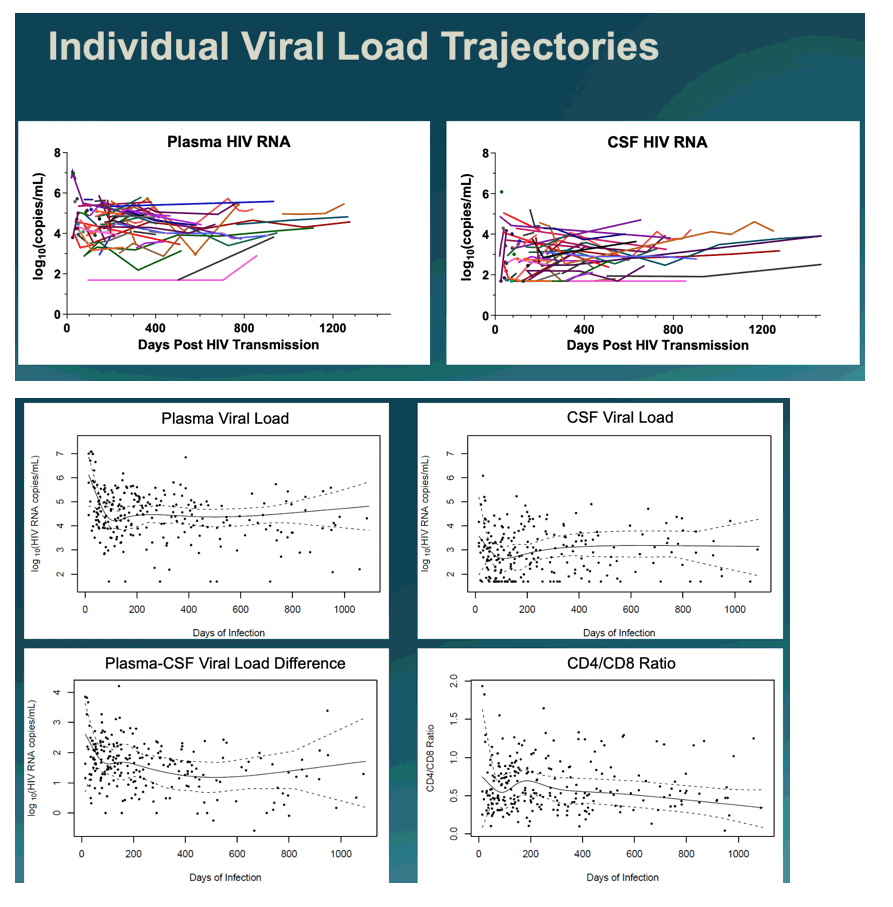
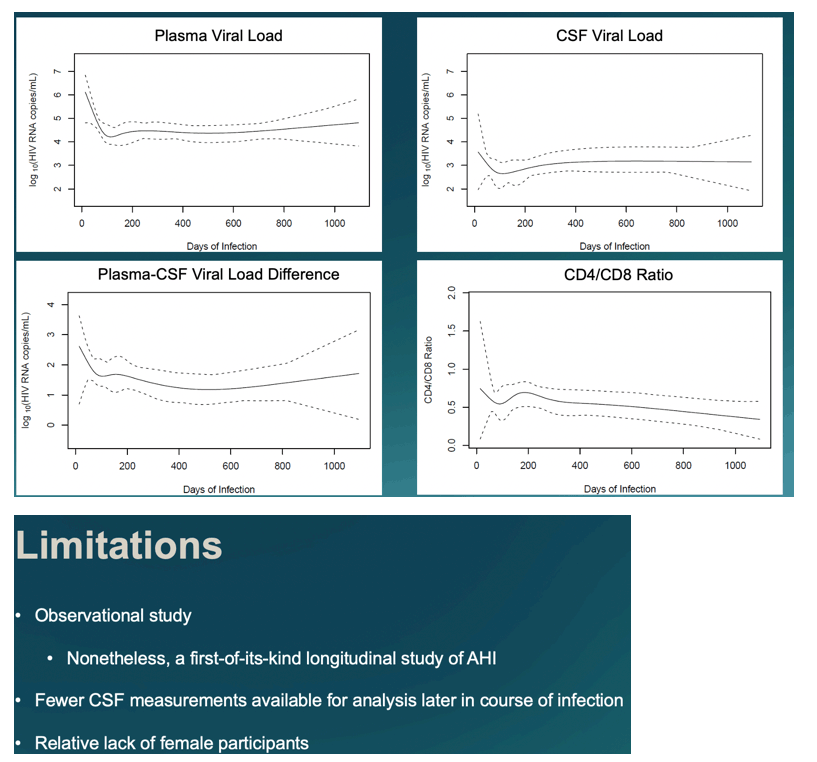
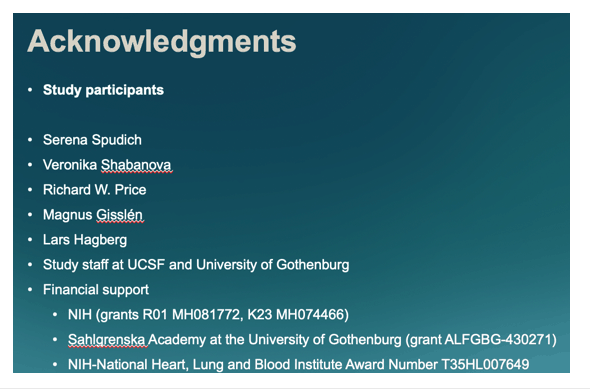
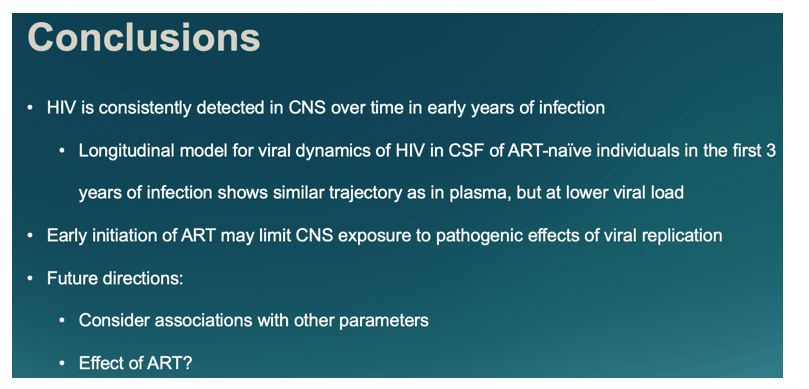
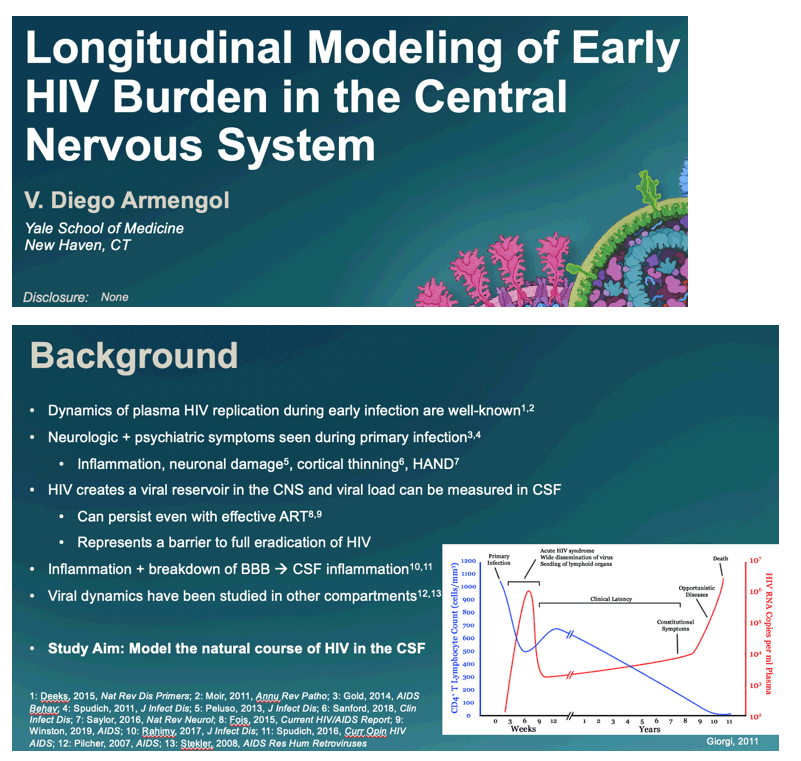
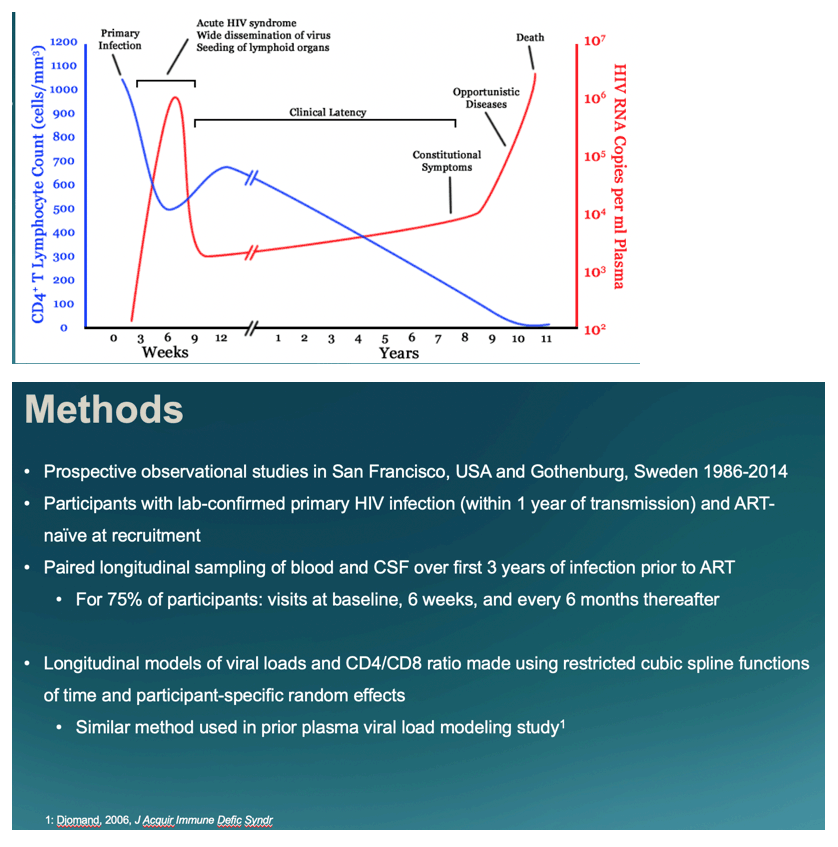
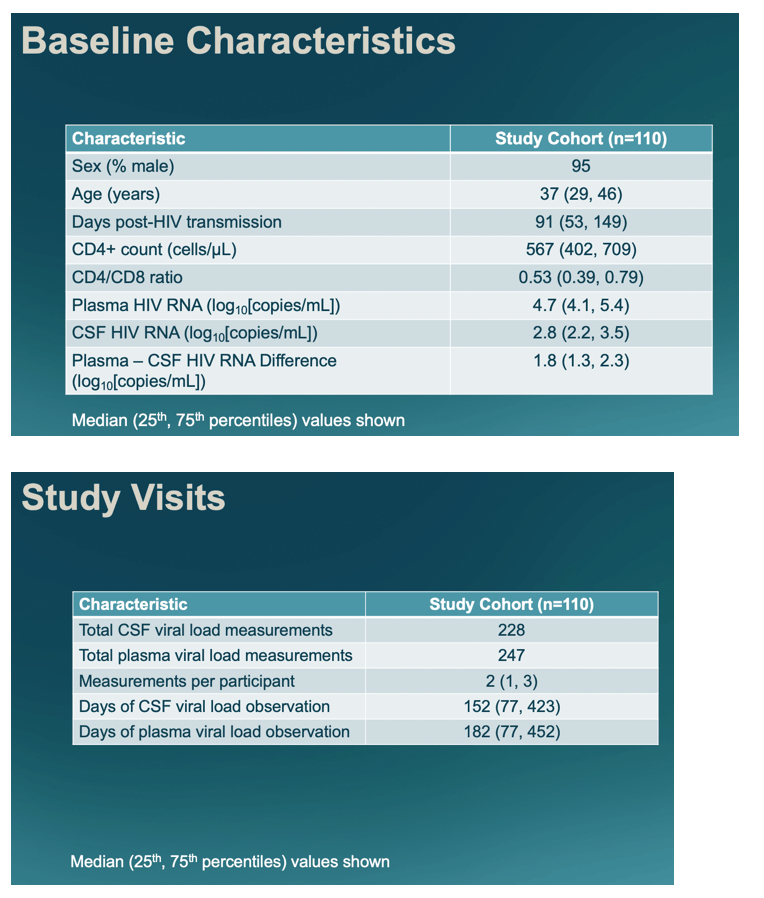
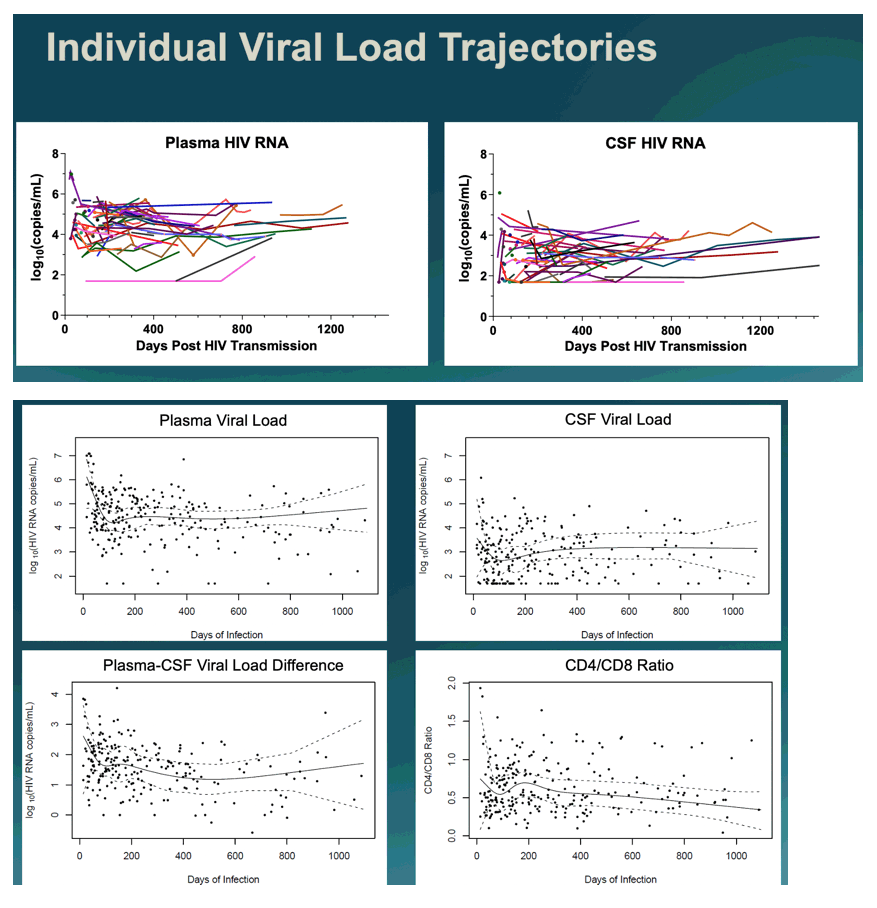
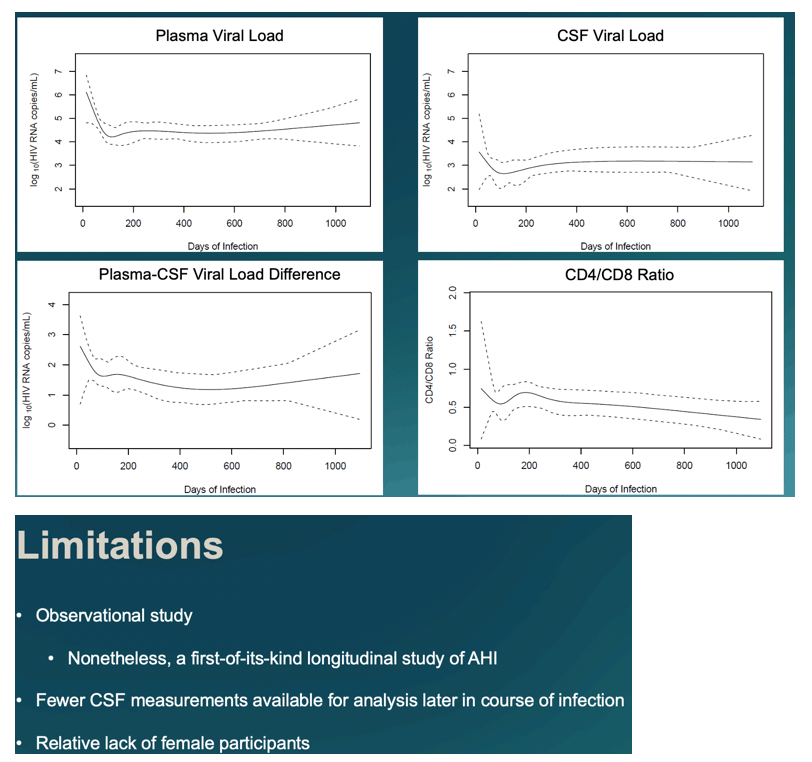
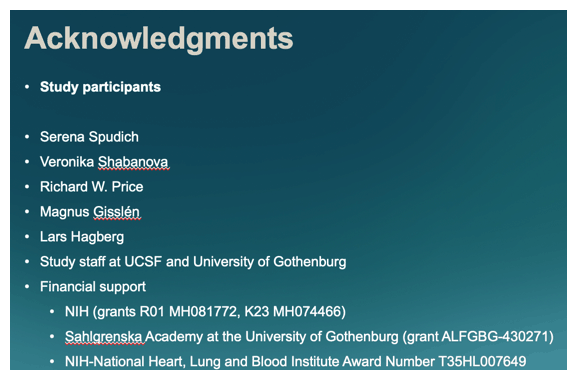
|
| |
|
 |
 |
|
|